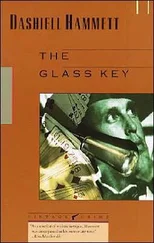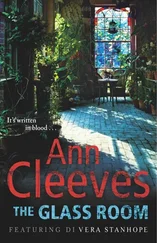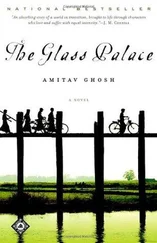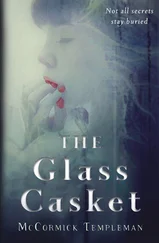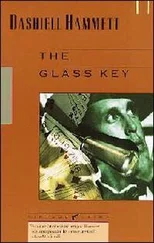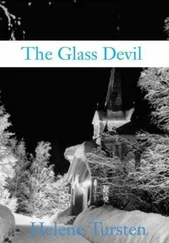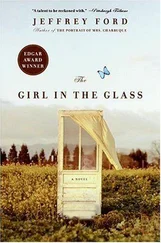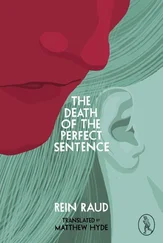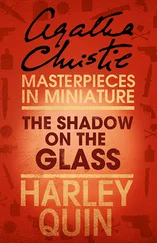The seconds passed. Sophia counted. She realized, as the numbers grew larger, that what was happening to her was the thing she had always feared the most: being alone, in a place where time passed invisibly, where she might close her eyes and suddenly wake up to find that days, months, years had passed. This is what I’m afraid of . This is what I’m always afraid of. But the thought brought her no terror. It seemed, rather, to bring a kind of clarity. What really keeps me here, in the present? Nothing. I could open my eyes and be in the future. Instead of memories of a whole life, I’d have . . . She opened her eyes and stared into the darkness. She had forgotten to count. The silence around her was absolute. Several thoughts flashed suddenly in Sophia’s mind at once; her eyes widened.
She had a vivid recollection of standing on the deck of the Swan . Grandmother Pearl’s voice came to her in the darkness, clear and sweet: “What else is there, that no one else is seeing because they’re looking at the time?”
“Not bound to time,” Sophia whispered aloud in the darkness. “Future, past, present—it makes no difference to me. I can see them for what they are.” She rose unsteadily to her feet. The sight of Theo’s hand, bound in silver thread, glinting in the underground chamber, filled her mind like a light. It’s Theo, she realized, it’s Theo who runs toward me when the tower collapses. She remembered the first time she had read the glass map, aboard the Seaboard Limited , sitting across from Theo in the moonlight. Then she had read it again, and again, and each time that same figure—more well-known, more painfully dear—had appeared at the end. The memories had seemed so vivid, so familiar, so real.
“I can see them for what they are,” Sophia murmured.
No longer counting, no longer having any need, she rose and climbed. Her legs seemed to spring forward without effort, despite her exhaustion and the darkness.
She reached into her pocket for another seed. Then she noticed with surprise that it was unnecessary. She could see the steps beneath her feet. A pale light spread toward her from the top of the stairs. Without pausing to look up, she climbed onward. Suddenly a cold rush of air hit her brow and she lifted her head. There was an opening only a few steps above her. Sophia took the final step. Numbly, she dropped the seed pinched between her fingers.
She found herself at the edge of a frozen lake, inside a high pyramid with glassy walls. Beyond their frosted surfaces, snow fell silently while flashes of lightning lit up the gray sky in the distance. It was just as she had seen so many times before on the surface of the four maps. We all thought the memories on the maps came from the past, she thought, but they were from the future. They are my memories. My memories of destroying this place.
1891, July #: #-Hour
Cartographites: The tools of the trade belonging to a cartologer. In portions of the known world where cartologers are believed to possess the skill of divination, cartographites are considered instruments of great power. The belief has some basis in fact, as the cartologer’s tools are frequently found objects from the other Ages.
—From Veressa Metl’s Glossary of Baldlandian Terms
A LONG, SPIRALING balcony circled the walls of the pyramid, leaving the frozen lake in the center untouched. Its surface, a clear slab marbled with white rime, could not entirely conceal the remarkable waters below. Sophia did not need the Tracing Glass to know that the lake was a map—the largest map she had ever seen. The carta mayor .
From the banks of the lake, she could see faint spurts of color swirling like tiny fish trapped below the ice. Lost for a moment in time, she considered how the memories she was about to create had found their way onto the four maps. Her mind folded hours of deliberation into a brief, illuminating second.
I had forgotten, Sophia thought , what a map really is: a guide for the path one must follow. The glass map does not contain memories. It contains directions. It has been telling me all along what I alone must do.
She stepped forward to look more closely at the carta mayor and knelt to press her palm against the frozen surface. The cold burned and rushed to her brain. She stayed there for a long time, her mind lost to the gentle movements that beckoned from beneath. As she took her hand away, she felt entirely calm. The ice had cooled her lungs and her aching legs. Her mind was refreshed. Taking a deep, cleansing breath, she turned toward the curving balcony and again prepared herself to climb.
I will climb to the top , she thought steadily, and from there push the stone that will bring the tower down. That is what the maps say I must do. But then something unexpected happened. Stepping onto the balcony, she placed her hand against the wall to steady herself, and a sudden rush of memories flooded her mind. She pulled away and looked at the wall more closely. The glass squares, slippery and slightly damp, were alive with finely graven images. As she glanced upward, she understood that every block in the pyramid was a carefully placed map: a map with memories of the Southern Snows.
She could not resist the temptation to walk slowly, tracing her finger across the smooth surfaces, letting the memories fill her mind.
She remembered dark days without sunlight and long seasons of bitter cold that seemed to chill her to the bone. She recalled seeking shelter in snowy caves and struggling to find warmth in the weak flames of a fire fed with animal bones. But then the memories changed, and she began to understand how the people had carved their lives out of the ice. The world of their Age was a vast, frozen expanse. Glaciers stretched across the earth, interrupted only by the freezing waters of the sea. There was no soil, no plant life, and hardly any sunlight. The inhabitants cut their homes out of the glaciers and ate from the ocean. For hundreds and hundreds of years, they survived with nothing more.
And then, Sophia recalled, one among them received a map. There were no memories of where it came from. Painted on sealskin, the map showed a route through the heart of the glaciers to caves deep underground. Caves that were warm and dry—and dark. They built their homes in the underground chambers, hollowing out larger and larger spaces for the growing subterranean cities. They never entirely abandoned the aboveground world of ice, but over time they traveled less frequently back and forth.
Sophia paused at the map that brought her the memories of the first experiments with soil. As she walked on, her fingers passing lightly over the glass, she was overwhelmed by the discoveries that had taken place. She did not understand them, but she could see the laborious task of finding rare soils and the even more arduous tasks of transforming, transmuting, and finally inventing soils.
She was almost a third of the way up the pyramid. She walked slowly, unaware of the empty stairway; crowds of people filled her vision as the memories flashed before her.
The discoveries in soil led to the growth of new plants—those that grew on small patches of underground soil, without sunlight, and those that grew on soil scattered across the ice. As the soils were adjusted, the roots grew more sophisticated, incorporating metals from the soil that permitted them to break through and acquire nourishment from even the most inhospitable rock and ice. The plants were bred to every purpose: to illuminate the underground caverns, to provide food where no ordinary crops would grow, to fill the labyrinthine tunnels with voices that would guide the way.
Читать дальше

